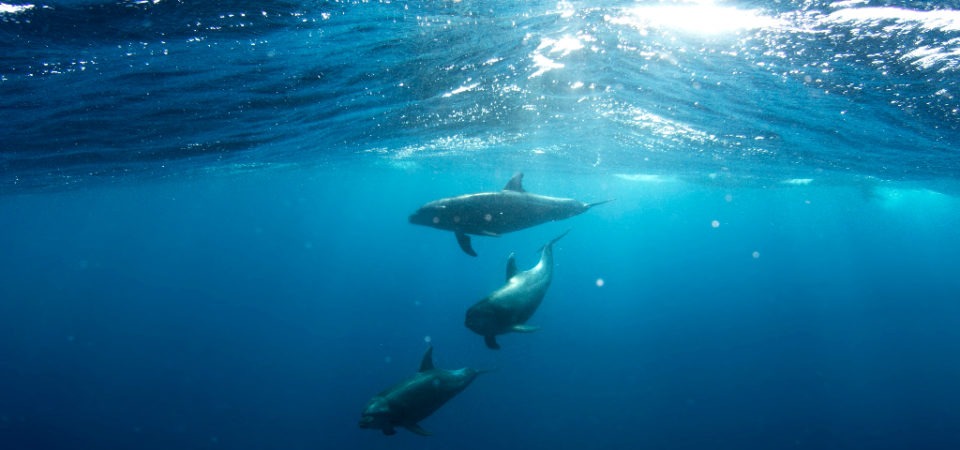It is a curious fact that the cup of Darjeeling tea on my desk may have been distilled from urine excreted by a T-Rex sixty-five million years ago. There is no new water. The water on Earth is ancient.
For every 1℃ of warming, evaporation increases water vapor by another 5% to 7%. The increased precipitation may come too soon, too late, all at once, or not at all. As water resources become threatened, water resource management becomes more complicated and the cost of supplies will skyrocket. The Colorado River generates 40% of the hydropower for Southern California and water for agriculture from the Rockies to Mexico.
Water fights
After two world wars, the U.N. recognized that nationalistic policies of rule by force must give way to cooperation and mediation by all sovereign stakeholders. That has remained the central unifying core of U.N. work. Less than a decade from their inception, notable progress was made in every component of the UN Sustainable Development Goals (SDGs). Then on September 24, 2019, President Trump addressed the 74th Session of the United Nations General Assembly.
Trump stunned the world by advocating a giant leap backward to nationalistic self-interest. He declared,
“ The free world must embrace its national foundations. It must not attempt to erase or replace them. The future does not belong to globalists. The future belongs to patriots.”
Trump’s U.N. declaration and withdrawal from the Paris Climate Accord took place while virtually every nation on Earth recognized the vital necessity of addressing the existential threat of climate change:
“The Nation’s valuable ocean ecosystems are being disrupted by increasing global temperatures through the loss of iconic and highly valued habitats and changes in species composition, and food web structure. Ecosystem disruption will intensify as ocean warming, acidification, de-oxygenation, and other aspects of climate change increase. In the absence of significant reductions in carbon emissions, transformative impacts on ocean ecosystems cannot be avoided” [1].
Tipping points and the need for oxygen
Today over 90% of trade moves freely over the sea. The goods and services provided by the ocean are fundamental to civilization. It is now a race between science and time before critical tipping points and feedback loops take over.
More than a third of the global population lives within sixty miles of the ocean shores. The ocean is a critical source of food, providing roughly 15% of Earth’s protein supply. It absorbs over 30% of human carbon emissions and buffers global warming by absorbing over 90% of solar energy. Ocean currents moderate global temperatures and distribute nutrients. This ocean conveyor system determines wind and precipitation patterns, and where the great fisheries are found. Agriculture, acidification, and pollution are threatening the life cycles of marine plant life. Marine photosynthesis produces more oxygen than all the land plants, forests, and jungles combined. Every other breath we take comes from the ocean. Acidification will eventually lower the metabolic efficiency of photosynthetic plankton, reducing phytoplankton’s ability to metabolize carbon dioxide and produce oxygen [2, 3]. The question is, will oxygen depletion be sudden or gradual? Brian Palmer, science reporter for the National Resource Defense Counsel puts it this way:
“…do you like oxygen?”
Protecting the great fisheries
As the Arctic grows more ice-free, nations vie for control of newly exposed and unregulated resources and shipping lanes. Despite the ocean’s vital importance, there are very few international maritime laws to ensure adequate protection. Fewer laws exist for protecting marine species.
Nearly all the large marine species like swordfish, salmon, Atlantic bluefin tuna, Atlantic cod, Atlantic halibut, European eel, European sturgeon, grouper, haddock, northern red snapper, sea bass, and 149 other species are endangered or threatened [4].
Enforcement is often left up to private, non-profit organizations. The sad history of cod and the Grand Banks fishery serves as a lesson in overfishing and fisheries management in general.
Some nations are expanding their territorial waters. The Spratly Islands are located over 500 miles from mainland China. China militarized these islands and vastly expanded China’s control of the South China Sea. The speed and scale of this action alarmed the international community, including Vietnam, The Philippines, Malaysia, and Japan, but who is willing to enforce the law against a powerful nation like China?
If rogue fishermen are pursued, they drop their nets and skedaddle. Yet their abandoned nets continue to kill fish for decades, further depleting fish stocks. These ghost nets also pose a hazard to marine navigation and make up approximately 10% of all marine litter.
At least a quarter of all fish stocks is overexploited or dangerously depleted. Fishing techniques have become more efficient, but continue to catch other species (bycatch) that are simply treated as waste, despite their importance to marine ecology. (Bycatch is either of a different species, the wrong sex, undersized, or juveniles of the target species). Installing proper regulatory oversight can save most fisheries if it is accomplished before ocean acidification, Arctic warming, and deoxygenation permanently destroy the marine food chain.
Acidification and warming temperatures are a death knell to marine coral. Coral reefs are critical habitats for 25% of marine life. Bottom dredging and coral mining for cement production destroy habitats that may never recover.
Dead zones and 16bn pounds of plastic
Roughly sixteen billion pounds of plastics were dumped into the ocean in 2020. This was in addition to the one hundred fifty million tons already contributed. The total tonnage per year is expected to triple by 2040. Most plastics will eventually crumble into micro-particulates that pose another hazard. Microscopic plastics are now beginning to appear in fish tissue that ends up on our dinner plates.
Dead zones are hypoxic ocean patches devoid of oxygen. They are found around the world. The combination of a warming ocean, acidification, and runoff is causing the ocean to run out of oxygen. The largest dead zone in the world covers 63,700 square miles of the Gulf of Oman in the Arabian Sea. The largest west coast dead zone encompasses over 27,000 square miles.
According to Monica Bruckner, Project Specialist at the Science Education Resource Center (SERC) at Carleton College, nitrogen and phosphorous runoff used in agriculture contribute to dead zones. One of the worst examples of chemical leeching and runoff is the Mississippi watershed. Agricultural production increases as food demands increase. Fertilizer runoff causes plankton to bloom in huge numbers. When plankton has consumed all the available nutrients, there is a massive die-off. Decomposition consumes the remaining dissolved oxygen in the water, producing a dead zone. According to NOAA, in 2017 the dead zone near the mouth of the Mississippi covered more than 8,000 square miles and cost billions of dollars in lost fishery revenue. In the last fifty years, the number of dead zones quadrupled from forty-nine to more than four hundred. The increasing use of chemicals, combined with record flooding and poor regulatory control, has increased the nitrogen content of the Mississippi to three times what it was in the 1950s. Phosphorous concentrations have doubled over the same period.
Too hot, too acidic
Ocean acidification has risen nearly 30% from pre-industrial levels and is beginning to prevent the formation of shells and exoskeletons in krill, mollusks, crabs, corals, and many plankton species.
As the Arctic warms, it alters both horizontal and vertical ocean circulation. Some of these changes stir up accumulated carbon sediments that settled on the ocean floor over millions of years. This added carbon further contributes to ocean acidification. Model projections indicate that ocean acidification could increase as much as 150% by the end of the century. This change is occurring more rapidly than many species can adapt to.
The ocean drives everything
Increased demand for fish protein is taking place while the marine environment is under severe stress from acidification, pollution, deoxygenation, and expanding dead zones. The subsequent mass extinction includes nearly all the species we like to eat. Pacific Northwest shellfish farmers have suffered up to an 80% loss in production because of marine acidification. Greg Dale, southwest operations manager at Coast Seafoods Company in Northern California summed it up this way:
“The ocean drives everything — the whole food web, our weather, clouds”.
What happens in the ocean has a direct impact on the climate, the food we eat, the water we drink, and over half of the oxygen we breathe. We must choose to develop cooperative multi-lateral stewardship and implement it very soon or accept that we will gradually be overwhelmed by environmental collapse. To achieve the magnitude of change that is needed, we must become system thinkers.
Further reading:
[1] 2018, Fourth National Climate Assessment, Volume II; Impacts, Risks, and Adaptation in the United States
[2] Crawley A, Kline DI, Dunn S, Anthony K.. The effect of ocean acidification on symbiont photorespiration and productivity in Acropora formosa. Glob Change Biol 16: 851-863
[3] Brading, Patrick, Mark E. Warner, Phillip A. Davey, David J. Smith, Eric Pieter Achterberg and David John Suggett. “Differential effects of ocean acidification on growth and photosynthesis among phylotypes of Symbiodinium (Dinophyceae).” Limnology and Oceanography 56 (2011): n. pag.
[4] National Oceanic and Atmospheric Administration NOAA: https://www.fisheries.noaa.gov/topic/endangered-species-conservation/species-in-the-spotlight
 Doug Smith is an environmental scientist with 30 years of experience with the U.S. Environmental Protection Agency (EPA) as a Senior Compliance Investigator. He taught and monitored “environmental management systems” under domestic and international operating standards. From 1996 – 2005, he was an EPA liaison to the United Nations and the World Bank Institute. Together, they helped nations develop their own environmental protection programs. Doug also served on the Board of Directors for the Seattle Chapter of the United Nations Foundation. He owned an international adventure travel company for thirty years, exploring many ancient civilizations, cultures, and remote regions of the world. His experiences with multi-national corporation management and the development of environmental programs give him a unique perspective on sustainability, human behavior, and the multiple existential crises threatening global civilization.
Doug Smith is an environmental scientist with 30 years of experience with the U.S. Environmental Protection Agency (EPA) as a Senior Compliance Investigator. He taught and monitored “environmental management systems” under domestic and international operating standards. From 1996 – 2005, he was an EPA liaison to the United Nations and the World Bank Institute. Together, they helped nations develop their own environmental protection programs. Doug also served on the Board of Directors for the Seattle Chapter of the United Nations Foundation. He owned an international adventure travel company for thirty years, exploring many ancient civilizations, cultures, and remote regions of the world. His experiences with multi-national corporation management and the development of environmental programs give him a unique perspective on sustainability, human behavior, and the multiple existential crises threatening global civilization.
The MAHB Blog is a venture of the Millennium Alliance for Humanity and the Biosphere. Questions should be directed to joan@mahbonline.org
The views and opinions expressed through the MAHB Website are those of the contributing authors and do not necessarily reflect an official position of the MAHB. The MAHB aims to share a range of perspectives and welcomes the discussions that they prompt.
